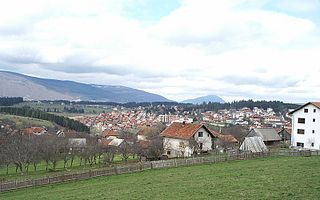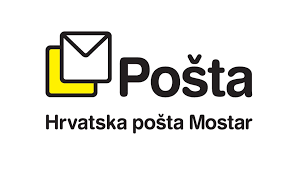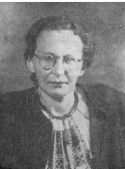You can help expand this article with text translated from the corresponding article in Bosnian. (February 2015)Click [show] for important translation instructions.
|
This is a survey of the postage stamps and postal history of Bosnia and Herzegovina.
You can help expand this article with text translated from the corresponding article in Bosnian. (February 2015)Click [show] for important translation instructions.
|
This is a survey of the postage stamps and postal history of Bosnia and Herzegovina.

The first issue in 1879 for Bosnia and Herzegovina, soon after its occupation by Austria-Hungary in 1878, is a stamp without any text, but representing the Austrian double-eagle coats of arms.

Stamps inscribed in German Bosnien Herzegowina were produced in 1906, featuring landscapes and monuments, including views of Doboj and the Carshija business quarter of Sarajevo. [1]
A number of military post stamps were produced in the 1910s, many of them depicting Francis Joseph I. Newspaper stamps which included a depiction of a girl in a Bosnian costume (1913) and postage due stamps (1904 and 1916) were also produced. [1]

In 1918 Bosnia and Herzegovina was merged in the newly created Kingdom of Serbs, Croats and Slovenians. Bosnia and Herzegovina issued stamps in November 1918 by were overprinting Austrian-issued pictorial stamps of 1910, some in Latin characters reading "DRZAVA S.H.S. / 1918 1918 / Bosna i Hercegovina" ("State of Slovenes, Croats and Serbs / Bosnia and Herzegovina") and others in their Cyrillic equivalent. [2] The first stamps for use throughout the kingdom were issued in January 1921.
The name of the kingdom was changed to the Kingdom of Yugoslavia in 1929, and later becoming the Socialist Federal Republic of Yugoslavia after WWII. Bosnia and Herzegovina used Yugoslav stamps until becoming independent in 1992.
After the independence in 1992, the country has three postal authorities, corresponding with ethnic and administrative division of the country. The stamps are issued by: Bosnia and Herzegovina post ( BH Pošta , Sarajevo), Croatian Posts ( HP Mostar , Mostar), and Serbian posts ( Srpske pošte , Banja Luka). In Federation of Bosnia and Herzegovina, stamps issued by BH pošta (the areas controlled by Army of Bosnia and Herzegovina in 1995) and HP Mostar (the areas controlled by Croatian Defence Council in 1995) are valid, while in Republika Srpska stamps issued by the Srpske pošte are valid.
BH pošta issue stamps from 27 October 1993, first inscribed Republika Bosna i Hercegovina, and from 1996 just Bosna i Hercegovina. Until 1 October 1998, the currency is Bosnia and Herzegovina dinar, and after that Bosnia and Herzegovina convertible mark. HP Mostar issue stamps from 12 May 1993. Initially the stamps were inscribed by Bosna i Hercegovina / Hrvatska Republika Herceg-Bosna, or abbreviated HR Herceg-Bosna. From 1996, the stamps bear inscription Bosna i Hercegovina, but with a different logo from BH pošta in Sarajevo. Initial currency was Croatian kuna, and from 1999 Bosnia and Herzegovina convertible mark. Both postal authorities from 2011 use double label Bosna i Hercegovina / Federacija Bosne i Hercegovine (sometimes abbreviated as FBiH), maintaining different logos, and areas of use.
Srpske pošte in Banja Luka started to issue stamps on 26 October 1992. The stamps first had label Republika Srpska, and the currency was until 24 December Yugoslav dinar. From 15th of July 2003, the stamps use double label Bosna i Hercegovina / Republika Srpska. The stamps of Republika Srpska usually use the Cyrillic script, so the label reads Рeпублиҝa Српска.

Republika Srpska is one of the two entities of Bosnia and Herzegovina, the other being the Federation of Bosnia and Herzegovina. It is located in the north and east of the country. Its largest city and administrative centre is Banja Luka, lying on the Vrbas river, and with a population of about 138,963 people.

Vladimir Ćorović was a Serb historian, university professor, author, and academic. His bibliography consists of more than 1000 works. Several of his books on the history of Serb, Yugoslav, Bosnian and Herzegovinian uprisings are considered to be definitive works on the subject.
Each "article" in this category is a collection of entries about several stamp issuers, presented in alphabetical order. The entries are formulated on the micro model and so provide summary information about all known issuers.

The Metropolitan Archdiocese of Vrhbosna is an ecclesiastical archdiocese of the Catholic Church. Its territorial remit includes the eastern parts of Bosnia and Herzegovina and the entirety of the Republic of North Macedonia. Its episcopal see is the city of Sarajevo (Vrhbosna), the capital of Bosnia and Herzegovina. The archdiocese has the following suffragans: in North Macedonia the Diocese of Skopje; in Bosnia, the dioceses of Banja Luka, Mostar-Duvno and Trebinje-Mrkan.

The Republic of Bosnia and Herzegovina was a state in Southeastern Europe, existing from 1992 to 1995. It is the direct legal predecessor to the modern-day state of Bosnia and Herzegovina.

Kneževo, formerly Skender Vakuf, is a town and municipality located in Republika Srpska, Bosnia and Herzegovina. As of 2013, it has a population of 9,793 inhabitants.

The country calling code of Bosnia and Herzegovina is +387.

The Central Bank of Bosnia and Herzegovina is the central bank of Bosnia and Herzegovina, located in the capital city, Sarajevo.
The Second level basketball leagues in Bosnia and Herzegovina are a 2nd-tier men's professional basketball competitions in Bosnia and Herzegovina. The tier is composed of three regional divisions: the A1 League, the Herzeg-Bosnia League, and the First League of Republika Srpska.
Miloš Okuka is a Serbian linguist, Slavist, dialectologist and literature historian.

Šargovac is a village in the municipality of Banja Luka.
Motike is a village in the municipality of Banja Luka, Republika Srpska, Bosnia and Herzegovina.
BH Pošta is one of three companies responsible for postal service in Bosnia and Herzegovina. The other two are Pošte Srpske and Hrvatska pošta Mostar. BH Pošta operates mainly in Bosniak-majority areas in the Federation of Bosnia and Herzegovina.
Pošte Srpske is one of three companies responsible for postal service in Bosnia and Herzegovina. The other two are BH Pošta and Hrvatska pošta Mostar. Pošte Srpske operates in Republika Srpska. Before the war conflicts in Bosnia and Herzegovina, Post Yugoslavia was responsible for postal services on the territory of SR BiH. However, at the beginning of the war in Bosnia and Herzegovina, the postal system in Bosnia and Herzegovina fell apart. At the beginning, there were frequent occurrences of armed attacks on Post Office vehicles and roadblocks, which made it impossible to carry out postal exchange.

Hrvatska pošta Mostar is one of three companies responsible for postal service in Bosnia and Herzegovina. It operates mainly in Croat-majority areas in the Federation of Bosnia and Herzegovina and its headquarters are in Mostar. It was established in 1993. The other two postal operators in the country are BH Pošta and Pošte Srpske.
Maslovare is a village in the central Bosnia, Bosnia and Herzegovina, Republika Srpska, Kotor Varoš Municipality.

Berta Bergman was a Yugoslav physician and the first Bosnian woman to finish high school.

Ivan Lovrenović is a Bosnian and Herzegovinian publicist, writer, historian, essayist, and editor.